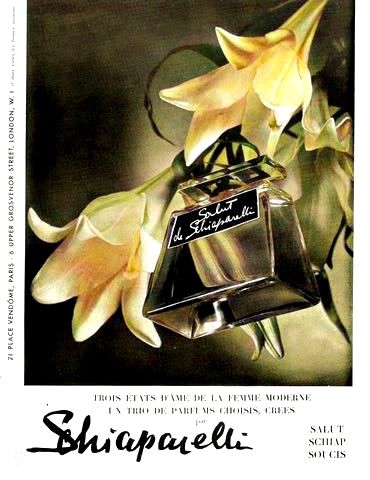In 1934, the launch of Schiaparelli's perfume "Salut" coincided with a vibrant period in both fashion and cultural history. Elsa Schiaparelli, the pioneering fashion designer known for her avant-garde creations, had already made a significant mark on the fashion world with her daring designs and collaborations with artists like Salvador Dalí. During this time, the world was emerging from the depths of the Great Depression, and there was a growing sense of optimism and vitality in society.
Elsa Schiaparelli's connection to perfumes was part of her broader vision to offer women a complete aesthetic experience. Perfumes, in her view, were not just fragrances but essential accessories that complemented her innovative clothing designs. This approach resonated particularly well in the 1930s, where fashion and perfume were intertwined in the concept of total elegance and style.
The choice of the name "Salut" for the perfume carries several layers of meaning. "Salut," which translates from French as "Hello" or "Greetings," suggests a friendly and welcoming tone. It evokes a sense of cheerfulness and social interaction, fitting well with the lively atmosphere of the time. In the context of a perfume, "Salut" could be seen as a gesture of homage or acknowledgment — a salute to femininity, elegance, and the spirit of the era.
For Schiaparelli, naming a perfume "Salut" was a deliberate choice to capture the essence of youthfulness and vitality. It would appeal to young women who embraced modernity and were looking for fragrances that reflected their dynamic lifestyle. The perfume was recommended for young girls, aligning perfectly with Schiaparelli's vision of empowering women through fashion and beauty.





